
All About the Einstein Field Equations
/
0 Comments
Definition/Summary
The Einstein Field Equations (EFE) are a set of ten interrelated differential equations that form the core of Einstein's general theory…
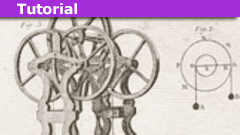
How to Solve a Multi-Atwood Machine Assembly
IntroductionThe figure on the right shows a "double-double" Atwood machine with three ideal pulleys and four masses. All pulleys are released from…

How to Apply Newton’s Second Law to Variable Mass Systems
Introduction
The applicability of Newton's second law in the oft-quoted "general form" $$\begin{align}\frac{d\mathbf{P}}{dt}=\mathbf{F}_{\text{ext}}\end{align}$$…

Why ChatGPT AI Is Not Reliable
I'll start with the simple fact: ChatGPT is not a reliable answerer to questions.To try to explain why from scratch would be a heavy lift, but fortunately,…

The Art of Integration
Abstract
My school teacher used to say
"Everybody can differentiate, but it takes an artist to integrate."
The mathematical reason behind this phrase…

How to Measure Internal Resistance of a Battery
Introduction
A commonly encountered school-level Physics practical is the determination of the internal resistance of a battery - typically an AA or D…

Subtleties Overlooked in Friction Questions: Object Slides Down Ramp
Problem statement (simplified)
An object slides down a ramp at angle θ to encounter level ground. Both surfaces have kinetic friction: μ' on the ramp,…

Reduction of Order For Recursions
This is not meant as a full introduction to recursion relations but it should suffice for just about any level of the student.Most of us remember recursion…

P vs. NP and what is a Turing Machine (TM)?
P or NP
This article deals with the complexity of calculations and in particular the meaning of
##P\stackrel{?}{\neq}NP##
Before we explain what P and…

How to Model a Magnet Falling Through a Conducting Pipe
Introduction
In an earlier article, we examined a magnet falling through a solenoid. We argued that the point dipole model can account for the basic features…
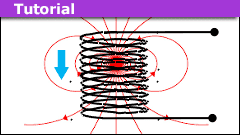
How to Model a Magnet Falling Through a Solenoid
Introduction
Modeling a magnet realistically is a task best done numerically. Even the simplified model of two separated disks with uniform surface…

Parallel Programming on a CPU with AVX-512
This article is the second of a two-part series that presents two distinctly different approaches to parallel programming. In the two articles, I use different…

Parallel Programming on an NVIDIA GPU
This article is the first of a two-part series that presents two distinctly different approaches to parallel programming. In the two articles, I use different…

A Novel Technique of Calculating Unit Hypercube Integrals
Introduction
In this insight article, we will build all the machinery necessary to evaluate unit hypercube integrals by a novel technique. We will first…

The Extended Riemann Hypothesis and Ramanujan’s Sum
Riemann Hypothesis and Ramanujan's Sum ExplanationRH: All non-trivial zeros of the Riemannian zeta-function lie on the critical line.
ERH: All…

A Trick to Memorizing Trig Special Angle Values Table
In calculus classes when you are asked to evaluate a trig function at a specific angle, it's 99.9% of the time at one of the so-called special angles we…

How to Setup a Raspberry Pi Cluster
INTRODUCTION
As a long-time computer programmer and almost as long a High-Performance Computer (HPC) user, I didn't know anything about how these machines…
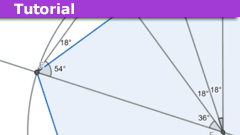
An Introduction to Theorema Primum
Introduction
Whilst no doubt most frequenters of "Physics Forums" will be familiar with Nicolaus Copernicus as the scientist who advanced the (at the…

Python’s Sympy Module and the Cayley-Hamilton Theorem
Two of my favorite areas of study are linear algebra and computer programming. In this article I combine these areas by using Python to confirm that a…

Geodesic Congruences in FRW, Schwarzschild and Kerr Spacetimes
Introduction
The theory of geodesic congruences is extensively covered in many textbooks (see References); what follows in the introduction is a brief…

Physical Applications of the “Tan Rule”
Introduction
Every secondary school student who has encountered trigonometry in his/her Math syllabus will most likely have come across the sine, cosine,…

Corrections to MIT Open Courseware: Systems of Varying Mass
Corrections to
MIT Open Courseware 8-01sc classical mechanics,
fall 2016
Applying Newton's Laws to systems of Varying Mass
PDF Course Link
My concerns…

Investigating Some Euler Sums
So, why only odd powers? Mostly because the even powers were solved by Leonard Euler in the 18th century. Since the “mathematical toolbox” at that…

Quaternions in Projectile Motion
Introduction
In a previous Physics Forums article entitled “How to Master Projectile Motion Without Quadratics”, PF user @kuruman brought to our…

How to Solve Projectile Motion Problems in One or Two Lines
Introduction
We show how one can solve most if not all, introductory-level projectile motion problems in one or maybe two lines. To this end, we forgo…
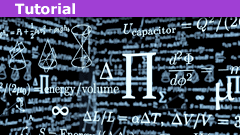
Computing the Riemann Zeta Function Using Fourier Series
Euler's amazing identity
The mathematician Leonard Euler developed some surprising mathematical formulas involving the number ##\pi##. The most famous…

Maximizing Horizontal Range of a Projectile
Introduction
A recent homework problem that appeared in the forums was concerned with maximizing the horizontal range of a projectile subject to the launch…

A Numerical Electromagnetic Solver Using Duality
In the previous insights article (How to Use Duality in Computational Electromagnetic Problems), I covered some uniqueness theorems for the Riemann-Silberstein…

The Electric Field Seen by an Observer: A Relativistic Calculation with Tensors
This Insight was inspired by the discussion in "electric field seen by an observer in motion", which tries to understand the relation between two expressions:…

Valentine’s Reflections: Mathematical Matters of the Heart
Introduction
Being a somewhat geeky Maths 'nerd', I spent days leading up to Valentine's Day trying to find a Maths function appropriate to the day. In…

How to Use Duality in Computational Electromagnetic Problems
Some weeks ago I happened across a post that caught my eye. Dale asked a question about the number of photons in an electromagnetic field. His question…

Geometry of Side-side-angle (SSA) and Impossible Triangles
What is the ambiguous case?
In high school geometry, the idea of proofs is often first introduced to American students. A common task is to use a basic…

Equations of Motion Revisited
Introduction
In any school Physics course, the Newtonian equations of motion are very much a 'stock' item. Students learn the equations and are given…

Split Electric Fields in Electrodynamics: Capacitor and Antenna
Abstract: The analysis of the two kinds of electric fields, namely the irrotational and non-conservative, is extended to electrodynamics, as exemplified…

How to Master Projectile Motion Without Quadratics
Introduction
In a homework thread a while back a PF member expressed dismay along the lines of "Oh no, not another boring projectile motion problem."…

Intro to Physically Reasonable Waves on a String
Introduction
Physics teachers who are either writing physics questions that deal with waves on a string or setting up equipment for a class lab or demo…

Create an Android Ringtone Picker with Ringtonemanager Class
In this article, I will show you how to create a ringtone picker using the RingtoneManager class in Android. You will be able to get the list of tones,…

How AI Is Changing STEM
We asked our PF Advisors “How do you see the rise in A.I. affecting STEM in the lab, classroom, industry and or in everyday society?”. We got so many…

How to Solve Second-Order Partial Derivatives
Introduction
A frequent concern among students is how to carry out higher order partial derivatives where a change of variables and the chain rule are…

The Analytic Continuation of the Lerch and the Zeta Functions
Introduction
In this brief Insight article the analytic continuations of the Lerch Transcendent and Riemann Zeta Functions are achieved via the Euler's…

A Path to Fractional Integral Representations of Some Special Functions
Introduction
This bit is what new thing you can learn reading this:) As for original content, I only have hope that the method of using the sets
$$C_N^n:…
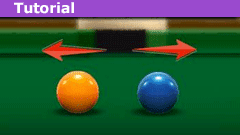
An Alternate Approach to Solving 2-Dimensional Elastic Collisions
Introduction
This article follows on from the previous on an alternate approach to solving collision problems. In that article, we determined the equal…
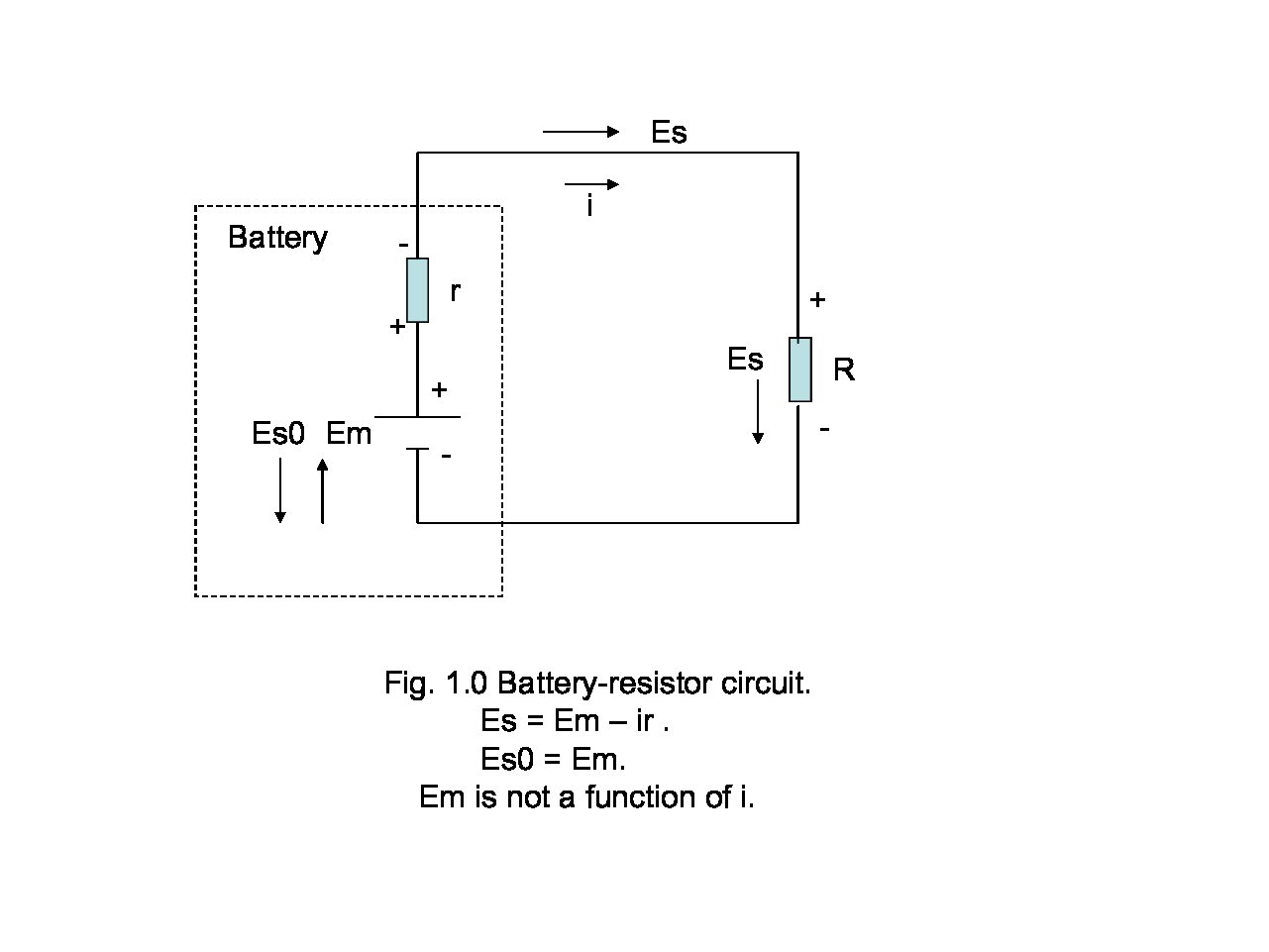
How to Recognize Split Electric Fields
Introduction
In a previous Insight, A New Interpretation of Dr. Walter Lewin’s Paradox, I introduced the fact that there are two kinds of E fields. …

An Introduction to the Generation of Mass from Energy
Introduction
This article is essentially an addition to the previous one on (mainly) inelastic collisions to include the particular case of inelastic…

An Alternative Approach to Solving Collision Problems
Introduction
Collisions are very much a stock item in any school physics curriculum and students are generally taught about the use of the principles…

Guide to C++ Programming For Beginners
Contents
1. Getting a C++ Compiler and Compiling Your First Program
2. Simple Datatypes and Declarations
3. Operators and Expressions
4. Input and…

Explore the Fascinating Sums of Odd Powers of 1/n
The goal is to get a little bit closer to the values of the zeta function (ζ(s)) and the eta function (η(s)) for some odd values of s. This insight is…

SOHCAHTOA: Seemingly Simple, Conceivably Complex
What is SOHCAHTOA
SOHCAHTOA is a mnemonic acronym used in trigonometry to remember the relationships between the sides and angles of right triangles.…

Recursion in Programming and When to Use or Not to Use It
Recursion is quite simple. It's a subroutine calling itself. It's surprising but some problems that look quite hard can be trivial using recursion - but…

Maxwell’s Equations in Magnetostatics and Solving with the Curl Operator
Introduction:
Maxwell's equation in differential form ## \nabla \times \vec{B}=\mu_o \vec{J}_{total}+\mu_o \epsilon_o \dot{\vec{E}} ## with ## \dot{\vec{E}}=0…

Learn the Basics of Dimensional Analysis
As a university teacher and as a PF member, I have often noted that students are largely unaware of or not using dimensional analysis to help them in their…

The Classical Limit of Quantum Mechanical Commutator
The Classical Limit of Commutator (without fancy mathematics)
Quantum mechanics occupies a very unusual place among physical theories: It contains classical…

Understanding Precession in Special and General Relativity
The Absolute Derivative
In relativity we typically deal with two types of quantities: fields, which are defined everywhere, and particle properties, which…

A Formal Definition of Large-Scale Isotropy
This Insight is part of my attempt to develop a formal definition of 'large-scale isotropy', a concept that is fundamental to most cosmology, but that…

Demystifying Parameterization and Surface Integrals
Introduction
This article will attempt to take the mystery out of setting up surface integrals. It will explain the basic ideas underlying surface integration…
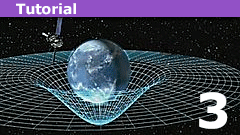
Exploring Fermi-Walker Transport in Kerr Spacetime
In the last two posts in this series, we developed some tools for looking at Fermi-Walker transport in Minkowski spacetime and then applied them in Schwarzschild…

Learning Fermi-Walker Transport in Schwarzschild Spacetime
In the first post in this series, we introduced the concepts of frame field, Fermi-Walker transport, and the "Fermi derivative" of a frame field, and developed…

AVX-512 Programming: Extracting Column Subtotals from a Table
In this Insights article I'll present an example that shows how Intel® AVX-512 instructions can be used to read a whole row of data in a single operation,…

Fermi-Walker Transport in Minkowski Spacetime
This is the first of several posts that will develop some mathematical machinery for studying Fermi-Walker transport. In this first post, we focus on Minkowski…

AVX-512 Assembly Programming: Opmask Registers for Conditional Arithmetic Conclusion
In the first part of this article (AVX-512 Assembly Programing - Opmask Registers for Conditional Arithmetic), we looked at how opmask registers can be…

AVX-512 Assembly Programming: Opmask Registers for Conditional Arithmetic
This is the second installment in a continuing series of articles on Intel AVX-512 assembly programming. The first installment is An Intro to AVX-512 Assembly…
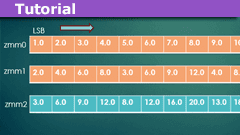
An Intro to AVX-512 Assembly Programming
History
In 1998, the Intel Corporation released processors that supported SIMD (single instruction, multiple data) instructions, enabling processors to…

Intro to Data Structures for Programming
Introduction
In the first part of this series, I talked about some fundamental notions in the world of algorithms. Beyond the definition of an algorithm,…

An Example of Servo-Constraints in Mechanics
Servo-constraint was invented by Henri Beghin in his Ph.D. thesis in 1922. For details see the celebrated monograph in rational mechanics by Paul Appell.To…

Orbital Mechanics in Unity Game Engine for Augmented Reality
In this Insight, I’ll go over implementing basic orbital mechanics simulations in the Unity game engine as well as an approach to scaling the simulation…

A New Interpretation of Dr. Walter Lewin’s Paradox
Much has lately been said regarding this paradox which first appeared in one of W. Lewin's MIT lecture series on ##{YouTube}^{(1)}##. This lecture was…

How to Calculate the Spin of Black Hole Sagittarius A*
This Insight takes a look at how it is possible to calculate the spin of Sagittarius A*, the supermassive black hole at the center of the Milky Way using…

Intro to Algorithms for Programming
Many threads here at PF include some questions about how to learn to program. This is asked by Physics students who want to learn programming to help their…

How to Solve Einstein’s Field Equations in Maxima
A few months ago, pervect pointed me to a post by Chris Hillman which is an introduction to the usage of Maxima for General Relativity. Maxima is a free…

Rindler Motion in Special Relativity: Rindler Coordinates
Our destination
In our last article, Hyperbolic Trajectories, we derived some facts about the trajectory of a rocket that is undergoing constant (proper)…

Rindler Motion in Special Relativity: Hyperbolic Trajectories
Introduction: Why Rindler Motion?
When students learn relativity, it's usually taught using inertial (constant velocity) motion. There are lots of reasons…

Learn Statistical Mechanics: Equilibrium Systems
This is the first of a multi-part series of articles intended to give a concise overview of statistical mechanics and some of its applications. These articles…

Demystifying the Chain Rule in Calculus
Introduction
There are a number of posts on PF involving a general confusion over the multi-variable chain rule. The problem is often caused by…

How to Make Units of Measurement Work for You
How do we use units? You may see one of these speed limit signs, nearly every day. Even though neither of them displays units, drivers know they are implied.…

A Journey to The Manifold SU(2): Representations
Part 1
Representations
Image source: [23]
6. Some useful bases of ##\mathfrak{su}(2,\mathbb{C})##
Notations can differ from author…

Learn Further Sums Found Through Fourier Series
In an earlier insight, I looked at the Fourier series for some simple polynomials and what we could deduce from those series. There is a lot more to be…

Learn an Integral Result from Parseval’s Theorem
Introduction:
In this Insight article, Parseval's theorem will be applied to a sinusoidal signal that lasts a finite period of time. It will be shown…

The Joy of Processing
In the early days of the personal computer revolution, computers were small, simple, and easy to operate. It was always great fun to write BASIC games…

Learn Relativity Using the Bondi K-calculus
Although Special Relativity was formulated by Einstein (1905), and given a spacetime interpretation by Minkowski (1908) [which helped make special relativity…

The Pantheon of Derivatives – Part V
Important Theorems - biased, of course
Implicit Function Theorem [1]
Jacobi Matrix (Chain Rule).
Let ## (x_0,y_0 ) ## be a point in$$U_1…
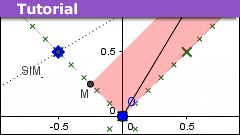
Relativity Variables: Velocity, Doppler-Bondi k, and Rapidity
Traditional presentations of special relativity place emphasis on "velocity", which of course has an important physical interpretation... carried over…

The Pantheon of Derivatives – Part IV
Lie Derivatives
A Lie derivative is in general the differentiation of a tensor field along a vector field. This allows several applications…
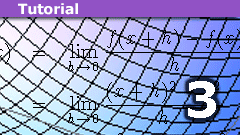
The Pantheon of Derivatives – Part III
Some Topology
Whereas the terminology of vector fields, trajectories, and flows almost by itself suggests its origins and physical relevance,…

The Pantheon of Derivatives – Part II
Generalizations Beyond ##\mathbb{R}## and ##\mathbb{C}##
As mentioned in the section on complex functions (The Pantheon of Derivatives - Part…

The Pantheon of Derivatives – 5 Part Series
Differentiation in a Nutshell
I want to gather the various concepts in one place, to reveal the similarities between them, as they are often…

Trick to Solving Integrals Involving Tangent and Secant
This little trick is used for some integration problems involving trigonometric functions is probably well-known, but I only learned it yesterday. So…

Frames of Reference: Linear Acceleration View
My previous Insight, Frames of Reference: A Skateboarder's View, explored mechanical energy conservation as seen from an inertial frame moving relative…

Fabry-Perot and Michelson Interferometry: A Fundamental Approach
Fabry-Perot Effect:
The Fabry-Perot effect is usually treated in most optics textbooks as the interference that results from multiple reflections of the…
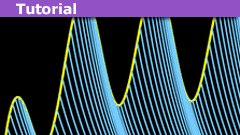
Using the Fourier Series To Find Some Interesting Sums
Preliminaries
If f(x) is periodic with period 2p and f’(x) exists and is finite for -π<x<π, then f can be written as a Fourier series:
[itex]f(x)=\sum_{n=-\infty}^{\infty}a_{n}e^{inx}…

The Schwarzschild Geometry: Physically Reasonable?
In the last article, we looked at various counterintuitive features of the Schwarzschild spacetime geometry, as illustrated in the Kruskal-Szekeres…

The Schwarzschild Geometry: Coordinates
At the end of part 1, we looked at the form the metric of the Schwarzschild geometry takes in Gullstrand-Painleve coordinates:$$
ds^2…

The Schwarzschild Geometry: Key Properties
Not long after Einstein published his Field Equation, the first exact solution was found by Karl Schwarzschild. This solution is one of the…

Learn Partial Differentiation Without Tears
Differentiation is usually taught quite well. Perhaps that's because it is the first introduction to calculus, which is considered a big step in a student's…
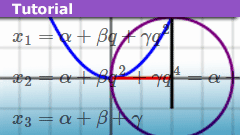
Learn How to Solve the Cubic Equation for Dummies
Everybody learns the "quadratic formula" for solving equations of the form [itex]A x^2 + B x + C = 0[/itex], even though you don't really need such a formula,…

Learn The Basics of Rolling Motion
Although rolling wheels are everywhere, when most people are asked "what is the axis of rotation of a wheel that rolls without slipping?", they will answer…

How to Determine the Change in Entropy
How do you determine the change in entropy for a closed system that is subjected to an irreversible process?Here are some typical questions we get…

Learn Orbital Precession in the Schwarzschild and Kerr Metrics
The Schwarzschild Metric
A Lagrangian that can be used to describe geodesics is [itex]F = g_{\mu\nu}v^\mu v^\mu[/itex], where [itex]v^\mu = dx^\mu/ds[/itex]…

Learn About Tetrad Fields and Spacetime
A spacetime is often described in terms of a tetrad field, that is, by giving a set of basis vectors at each point. Let the vectors of the tetrad be denoted…

Omissions in Mathematics Education: Gauge Integration
The current (pure) mathematics curriculum at the university is well-established. Most of the choices made are sensible. But still, some important topics…

Learn About Relativity on Rotated Graph Paper
This Insight is a follow-up to my earlier tutorial Insight (Spacetime Diagrams of Light Clocks).
I gave it a different name because I am placing more…
